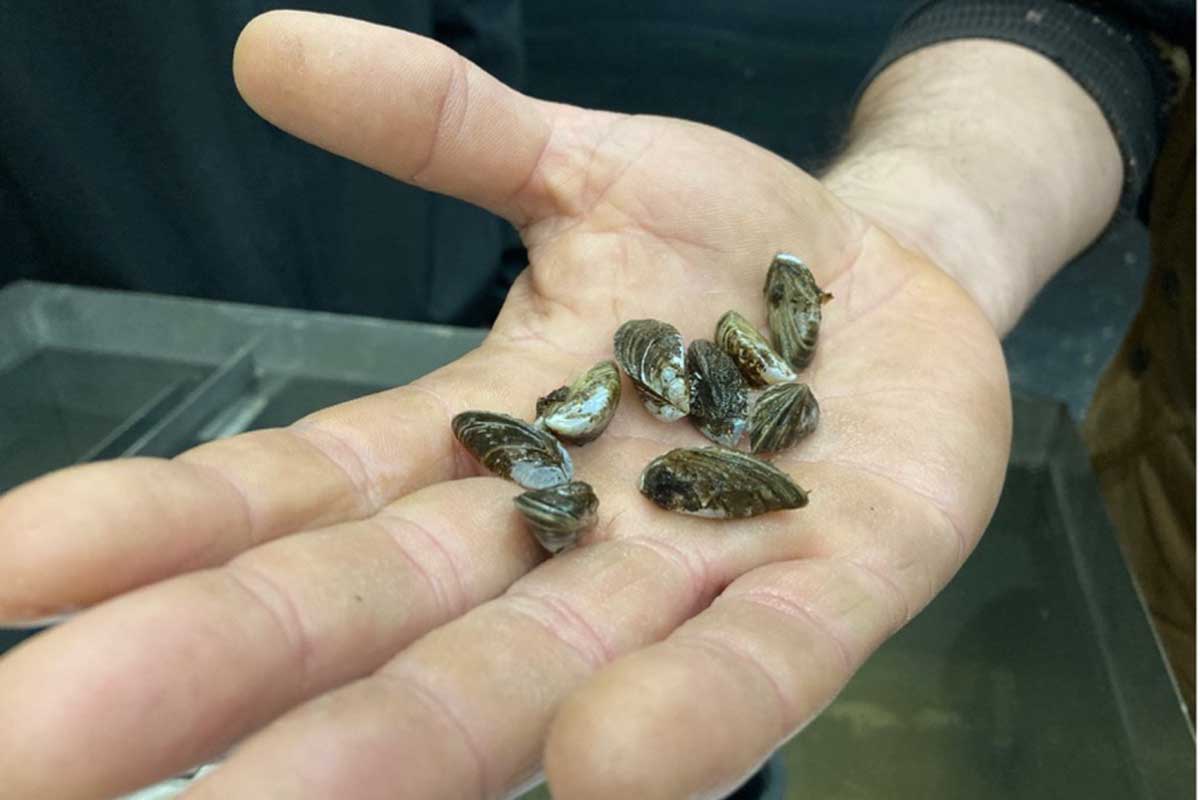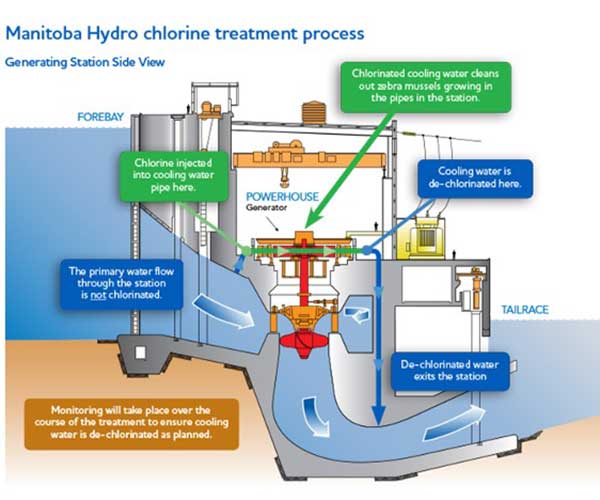Zebra mussels: what we’re doing to control them
When zebra mussels were first detected in a southern Manitoba lake in 2013, environmental staff at Manitoba Hydro knew it was only a matter of time before the invasive species spread downstream to our northern generating stations.
If left untreated, zebra mussels pose a significant risk to the safe operation of generating stations.
“Zebra mussels can grow inside pipes, reducing or blocking water flow to critical systems for unit cooling and fire protection, and could require station outages to remove the mussels if we weren’t proactive in treating them,” said Mathew Bannerman, an environmental specialist at Manitoba Hydro.

Zebra mussels are an aquatic invasive species.
In 2019, zebra mussels were first detected in the Nelson River in northern Manitoba. They had spread downstream from Lake Winnipeg in southern Manitoba and populations were rapidly increasing in the lakes near our northern generating stations.
“In places like Stephens Lake, we saw populations grow by 100,000 per cent in 2020 alone,” Bannerman said. “By fall 2020, we had zebra mussels inside every one of our Nelson River Generating Stations.”
But we were prepared.
Our zebra mussel project team implemented a low-level chlorine treatment to flush the mussels out of our generating stations. This allowed the stations to continue generating clean hydroelectricity while being treated. Chlorine treatment is the most effective method to control adult zebra mussel growth and is widely used at other hydroelectric generating stations in North America.
Zebra Mussels: Five Generating Stations Successfully Treated.
“When needed, treatment is administered within generating station pipes when water temperatures are above 15°C (59°F),” said Colin Jones, a mechanical engineer on our zebra mussel project team. “The treatment controls zebra mussel growth in essential pipes using a concentration of chlorine similar to levels found in municipal drinking water. Any residual chlorine left in the water is then de-chlorinated before it is discharged from the station.”
Manitoba Hydro’s zebra mussel treatment plan was developed with the help of industry experts and has been approved by the Pest Management Regulatory Agency of Health Canada, Manitoba Conservation and Climate, and Manitoba Agriculture and Resource Development.

View a cross section of a typical generating station showing the chlorine treatment and monitoring process.
As of fall 2021, Manitoba Hydro’s zebra mussel project team had successfully completed the first chlorine treatments at five generating stations on the Nelson River, including 45 generators and five fire protection systems. The five generating stations treated are Long Spruce, Kelsey, Kettle, Limestone and Jenpeg.
As zebra mussels are now established in the Nelson River, Manitoba Hydro will continue to monitor their population and treat our stations as necessary.
